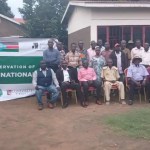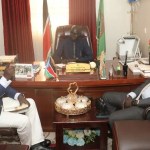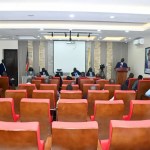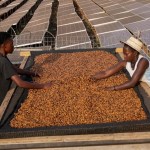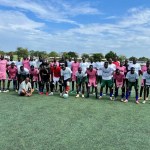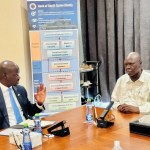(Kampala) – The Ugandan government has secured funding of Ush2.17 trillion (approximately $560.2 million) for the construction of its long delayed Standard Gauge Railway (SGR) line from Malaba to Kampala. This marks a major step forward in improving regional transport and trade along the Northern Corridor, with important implications for South Sudan and its trade logistics.
The funds will come largely from the Islamic Development Bank (IsDB), which has committed to providing the bulk of the financing. Uganda’s own government will contribute Ush79.03 billion (about $21.9 million). With this 19.4 percent portion of the project financing already in place, construction is now expected to begin after years of setbacks.
The project is part of the broader Northern Corridor Integration Projects (NCIP), which aim to boost connectivity between East African countries. This particular rail segment is seen as key to easing the flow of cargo between the port of Mombasa and inland destinations, including South Sudan, Rwanda, and the Democratic Republic of Congo.
During his budget speech on 12 June, Uganda’s Finance Minister Matia Kasaija said construction of the 272-kilometre railway had officially begun following its launch by President Yoweri Museveni in November 2024. The railway is expected to reduce the cost of cargo transport by 50 percent—from $120 per tonne to $60—and shorten travel time from Mombasa to Kampala from seven days to just one.
The SGR project had been on hold for years due to financing problems. Several financiers had previously pulled out, leaving Uganda to seek new partners. A breakthrough came in May 2025, when Kampala signed a $800 million agreement with the IsDB during the bank’s 50th Annual Meetings in Algiers.
As part of that agreement, a Limited Notice to Proceed (NTP) was issued last month, allowing the project’s lead contractor—Turkish firm Yapi Merkezi—to begin work. An initial $83 million was released to fund early civil works.
According to industry experts, the NTP serves as formal authorisation from the project owner, confirming that the necessary contractual, financial, and regulatory requirements have been met before work starts on site. While this step enables initial work, further funding from a range of lenders—such as the UK Export Finance agency, Turkish Exim Bank, and China Exim Bank—is still under negotiation.
The estimated cost of land acquisition between Malaba and Kampala currently stands at Ush620.87 billion (roughly $172 million). So far, compensation for affected landowners has been completed from Malaba to Buikwe. Completion of compensation to Kampala will depend on the availability of additional funds.
Meanwhile, Kenya is actively seeking Ksh358 billion (about $2.77 billion) to extend its own SGR from Naivasha to Malaba. This extension is crucial for linking with Uganda’s segment and ensuring a continuous rail corridor from the coast to Kampala and beyond.
Kenyan officials have been in China negotiating a “Panda bond”—a sovereign bond issued in Chinese Yuan within China’s domestic market. The bond would mark Kenya’s entry into Chinese capital markets and could help finance its section of the railway. The bond is expected to be floated in Shanghai by the end of the year.
A Kenyan government source confirmed that two Treasury officials are currently in China to finalise arrangements. Though the deal remains at the conceptual level, authorities are confident the bond will be approved soon.
China has already financed the first two SGR phases in Kenya—from Mombasa to Nairobi and then to Naivasha—through loans from the China Export-Import Bank. However, Beijing had pulled back from financing the Naivasha-to-Malaba leg due to concerns about Kenya’s rising debt and the economic feasibility of the project.
Recently, Kenya renewed its request for funding. During President William Ruto’s state visit to Beijing in April 2025, Kenya and China agreed to co-finance the 475-kilometre line to Malaba. The link is designed to connect with Uganda’s new railway to Kampala, forming a continuous rail route inland.
Without this connection, cargo bound for Uganda, South Sudan, and other landlocked countries has had to rely on road transport, which is slower and more expensive. The completion of the SGR would help to shift much of this freight onto rail, improving efficiency and reducing transit times.
With concessional loans no longer easily available, both Kenya and Uganda are turning to alternative financing instruments such as Sukuk (Islamic bonds) and sovereign bonds from Chinese and Gulf markets.
Kenya’s Treasury Cabinet Secretary John Mbadi said Nairobi is diversifying its sources of financing, including exploring bonds in the UAE. “We don’t want to confine ourselves to specific markets,” he noted, highlighting the risks of relying on a narrow base of lenders.
Although concessional funding from China has declined in recent years, the country has opened up to alternative models, such as public-private partnerships and bond financing. These may prove critical for countries like Uganda and Kenya as they seek to modernise infrastructure without further burdening their debt levels.
The completion of the Naivasha–Malaba–Kampala railway corridor would offer significant trade advantages not only for Uganda but also for landlocked South Sudan. With Juba reliant on Mombasa for imports, the shift to rail could reduce costs, improve delivery timelines, and support broader regional integration.










